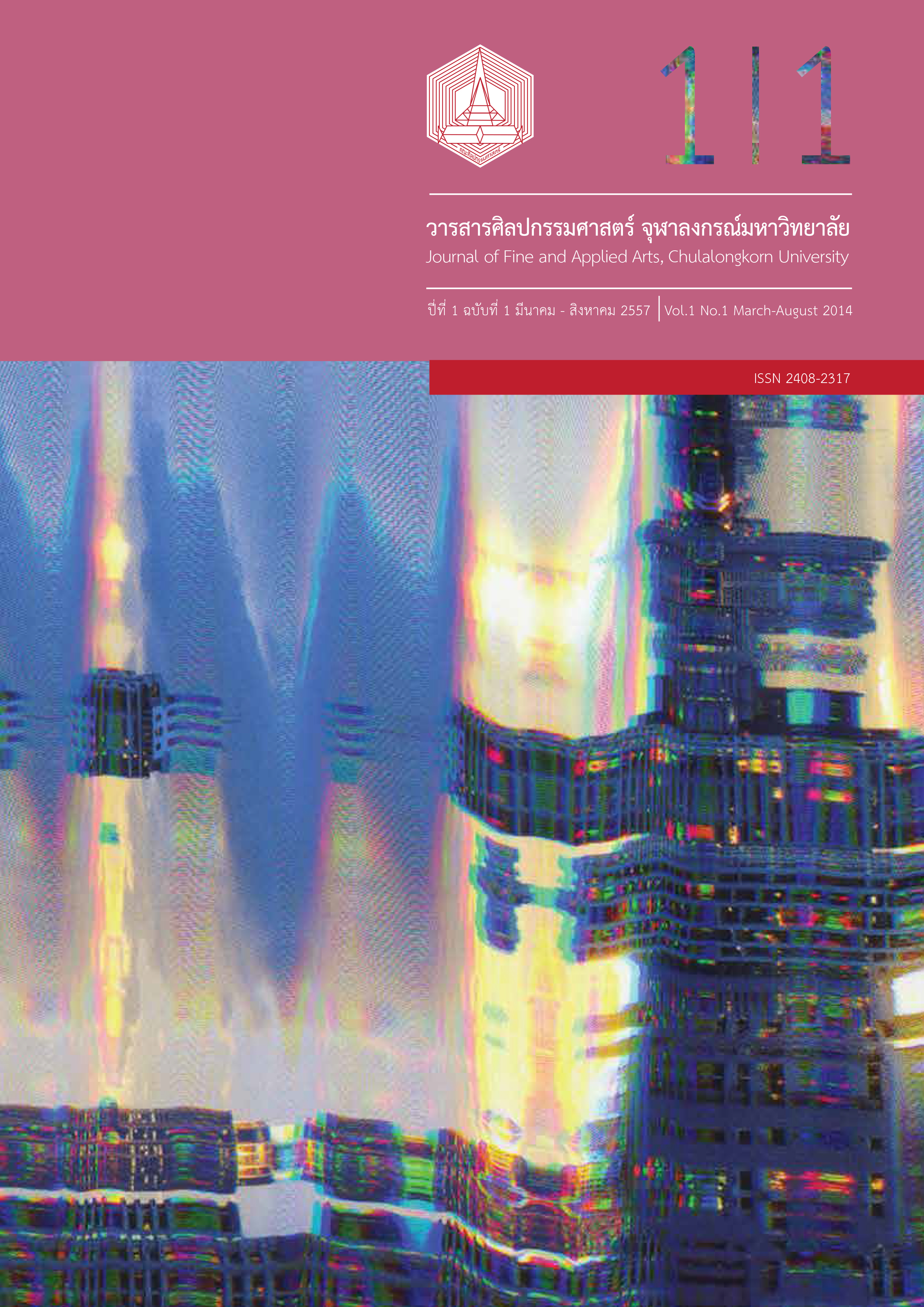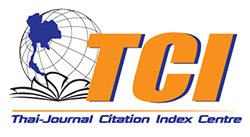รูปแบบการขับเสภาทางพระยาเสนาะดุริยางค์ (แช่ม สุนทรวาทิน)
Keywords:
การขับเสภา, พระยาเสนาะดุริยางค์ (แช่ม สุนทรวาทิน), Sepa Singing Style, Prayasanohduriyang (Cham Sundaravadin)Abstract
บทคัดย่อ
บทความนี้มีวัตถุประสงค์เพื่อศึกษารูปแบบและหลักการขับเสภาทางพระยาเสนาะดุริยางค์ (แช่ม สุนทรวาทิน) เครื่องมือในการวิจัยใช้การสังเกตแบบไม่มีส่วนร่วมและการสัมภาษณ์แบบไม่มีโครงสร้างเป็นเครื่องมือ โดยเก็บข้อมูลจากการสัมภาษณ์ผู้ทรงคุณวุฒิด้านขับเสภา 4 ท่านได้แก่ (1) เจริญใจ สุนทรวาทิน (2) เลื่อน สุนทรวาทิน (3) ศิริ วิชเวช (4) ถาวร สิกขโกศล ส่วนการวิเคราะห์ข้อมูลเป็นการวิเคราะห์เชิงพรรณนา
ผลงานโดดเด่นของพระยาเสนาะดุริยางค์ (แช่ม สุนทรวาทิน) คือ ปรับปรุงการขับร้องเพลงไทยให้ละเมียดละไม ไพเราะมากขึ้น นอกจากนี้ยังได้พัฒนาทางขับเสภาให้มีลีลาชั้นเชิงที่แยบยล แสดงอารมณ์และความรู้สึก และสะท้อนถึงความประณีตในการขับเสภา อีกทั้งมีวิธีการและระเบียบปฏิบัติในการขับเสภาที่ชัดเจนลงตัว รูปแบบการขับเสภาของพระยาเสนาะดุริยางค์ (แช่ม สุนทรวาทิน) พบว่าทำนองเกริ่นเสภา ที่เป็นทำนองเอื้อนสำหรับการขึ้นต้นมี 4 แบบคือ เกริ่นอย่างยาว 2 แบบ เกริ่นอย่างกลาง 1 แบบ เกริ่นอย่างสั้น 1 แบบ ส่วนทำนองหลักที่ใช้ในการขับเสภาทั้งหมดมี 7 ทำนองคือ ทำนองยืน ทำนองเปลี่ยน ทำนองครวญต้นบท ทำนองหวน ทำนองยอด ทำนองผัน และทำนองครวญท้ายบท สำหรับหลักการขับเสภาทางพระยาเสนาะดุริยางค์ (แช่ม สุนทรวาทิน) พบว่าหลักการขับเสภาที่ดีควรมีองค์ประกอบดังต่อไปนี้ คือ เสียง คำขับ การเอื้อน จังหวะ การหายใจ การสร้างอารมณ์ และความประณีต ซึ่งองค์ประกอบในการขับเสภาทุกองค์ประกอบดังกล่าวนี้ ผู้สนใจเรียนขับเสภาต้องหมั่นศึกษา และฝึกฝนต่อเนื่องจนเกิดความชำนาญในที่สุด
Abstract
This research aimed to investigate form and principles of the Sepa singing style belonging Prayasanohduriyang (Cham Sundaravadin). This was a qualitative research. Data were gathered using a non-participatory observation form and an unstructured interview form The 4 key informants were 4contemporary masters of Sepa singing.namely (1) Jalernjai Sundaravadin (2) Lurn Sundaravadin (3) Siri Vitchavet (4) Thawon Sikkhakoson Data were analyzed through descriptive analysis.
Prayasanohduriyang, a musician in the royal court from the end of the reign of King Rama IV up to the reign of King Rama VII, is best known for refining the vocal techniques used in traditional Thai singing to make them softer, milder, and more melodious. He developed a very intricate, ingenious and graceful style of Sepa singing that could convey feeling and emotional expression with great finesse. He defined a clear pattern and method of Sepa singing style that made sense to others. Analysis of the forms of Sepa singing developed by Prayasanohduriyang showed that to introduce a song, he used one of four different types of melismatic prelude. Two were long preludes; one was medium and another was short. There were seven principle melodies that made up the main part of each Sepa song. These are called Tamnong Yuen (“standing melody”), Tamnong Plian (“changing melody”), Tamnong Kruan Tonbot (“beginning lament”), Tamnong Huan (“refrain”), Tamnong Yod (“crescendo”), Tamnong Pan (“turning melody”) and Tamnong Kruan Taibot (“ending lament”). As for the principles of Prayasanohduriyang’s Sepa singing, he stated that good rendition requires good voice quality, lyrics, mastery of melisma, rhythm, breathing techniques, expressiveness and delicacy in delivery. He advised that anyone who wants to sing Sepa must study hard and practice continuously to achieve expertise.
Downloads
Published
Issue
Section
License
ลิขสิทธิ์ของบทความเป็นของเจ้าของบทความ บทความที่ได้รับการตีพิมพ์ถือเป็นทัศนะของผู้เขียน
กองบรรณาธิการไม่จำเป็นต้องเห็นด้วยและไม่รับผิดชอบต่อบทความนั้น






